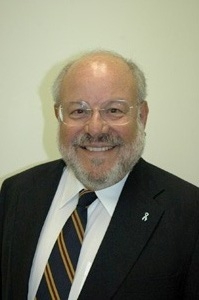And then all hell breaks out.
A key scene takes place at a press conference at the Trinity site a month after the test bomb was exploded.It pinpoints Laurences decision that betrayed not only Burchett and himself, but all of humanity by steering the public away from the truth about radiation while obliterating Burchetts story.For HaLevy, this highlights the moment where Laurenceif he ever had a soul lost it.
But the rewards were immediate.Jessie says: Laurence is front page in the Times for two full weeks in September 1945: Ten articles, 20,000 words. He coins the term Atomic Age but uses the word radiation only four times, not once mentioning its dangers.And he wins a Pulitzer.
Jessie follows about how: The Times offered Laurences articles for free to any newspaper that wanted themwhich, of course, they all did. Then they published a booklet of the articles as The Story of the Atomic Bomb.They sold it for just ten cents, saying it was so every school child across American could afford their own copy.
And so our earliest atomic narrative was set in the minds of children.
Interactions between Laurence, Burchett, and Jessie, among others, continue through
the play. They include Edward Teller who worked at the Manhattan Project and led the development of a hydrogen bomb.At one point, Teller says to Laurence, This atomic bomb were making is nothing. The hydrogen bomb will be a thousand times more powerful2,000 times.
And it is.
While Laurence and Burchett never met, HaLevy has them confronting each other repeatedly through the script, going at it hammer and tongs over journalistic ethics, moral responsibility, and what constitutes the truth. She weaves surreal encounters between the living, the dead, the imagined, and Jessies real world timeline of health challenges, blending fact-based journalism with magical realism as the script explores responsibility, guilt, redemption, and the cost of humanitys choices. The story veers from gritty realism and despair to moments of otherworldly connection that ultimately lead to hope.
The staged reading of the play at Wilmington College, a school founded by the Religious Society of Friends in 1870and still Quaker-affiliated,will be in its 400-seat Heiland Theatre and admission will be free.
Tanya Maus, Director of the Wilmington Peace Resource Center said, Libbe HaLevys Atomic Bill and the Payment Duereveals the way in which individuals become caught up in the powerful forces of governments seeking to produce false narratives to gain public support for nuclear weapons use and development. The character Jessies powerful drive to tell the truth about Laurences complicity in the U.S. governments censorship and cover up of the effects of the atomic bombings compels Atomic Bill to finally come to terms with his moral failing as a journalist and citizen of the United States. Jessie thus leads the audience to reflect upon its own assumptions about nuclear weapons and nuclear power and their continued destructive impact today on human lives in the United States and throughout the world.
To which I add: This play is so, so, so important.
HaLevy, based in Los Angeles, is already fielding requests for readings and staged readings in Japan, New Mexico, Navajo Nation, Nevada, and Germany, and she has talks lined upabout representation of the script to Hollywood.Her hope is for a fully staged production, though she wouldnt say no to a film offer. James Cameron is on my radar, as hes already announced hes directing a film on the start of the Atomic Age, the same time frame as my script, but I doubt he has the kind of background information it took me years to dig out. Id love to have a conversation with his people.
(Note: You can view every article as one long page if you sign up as an Advocate Member, or higher).





